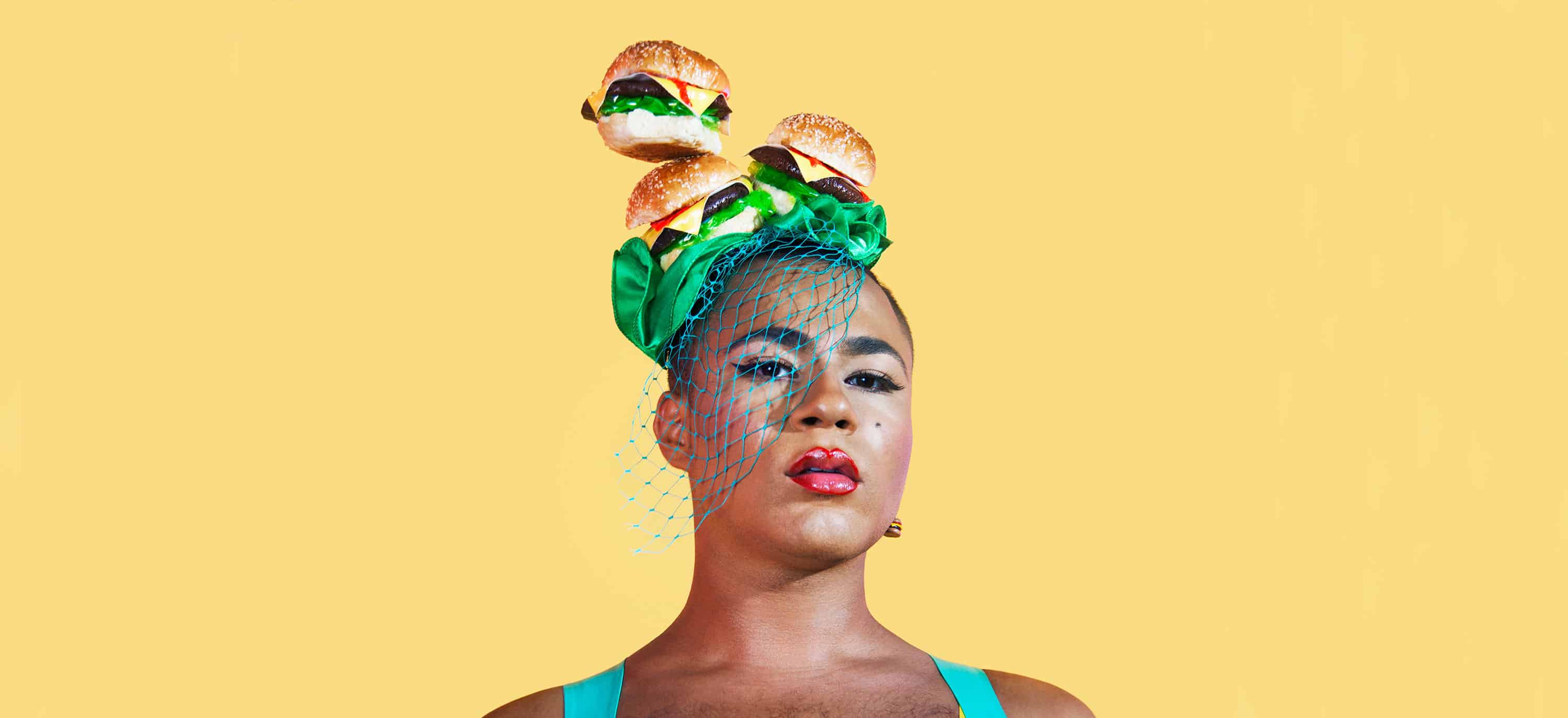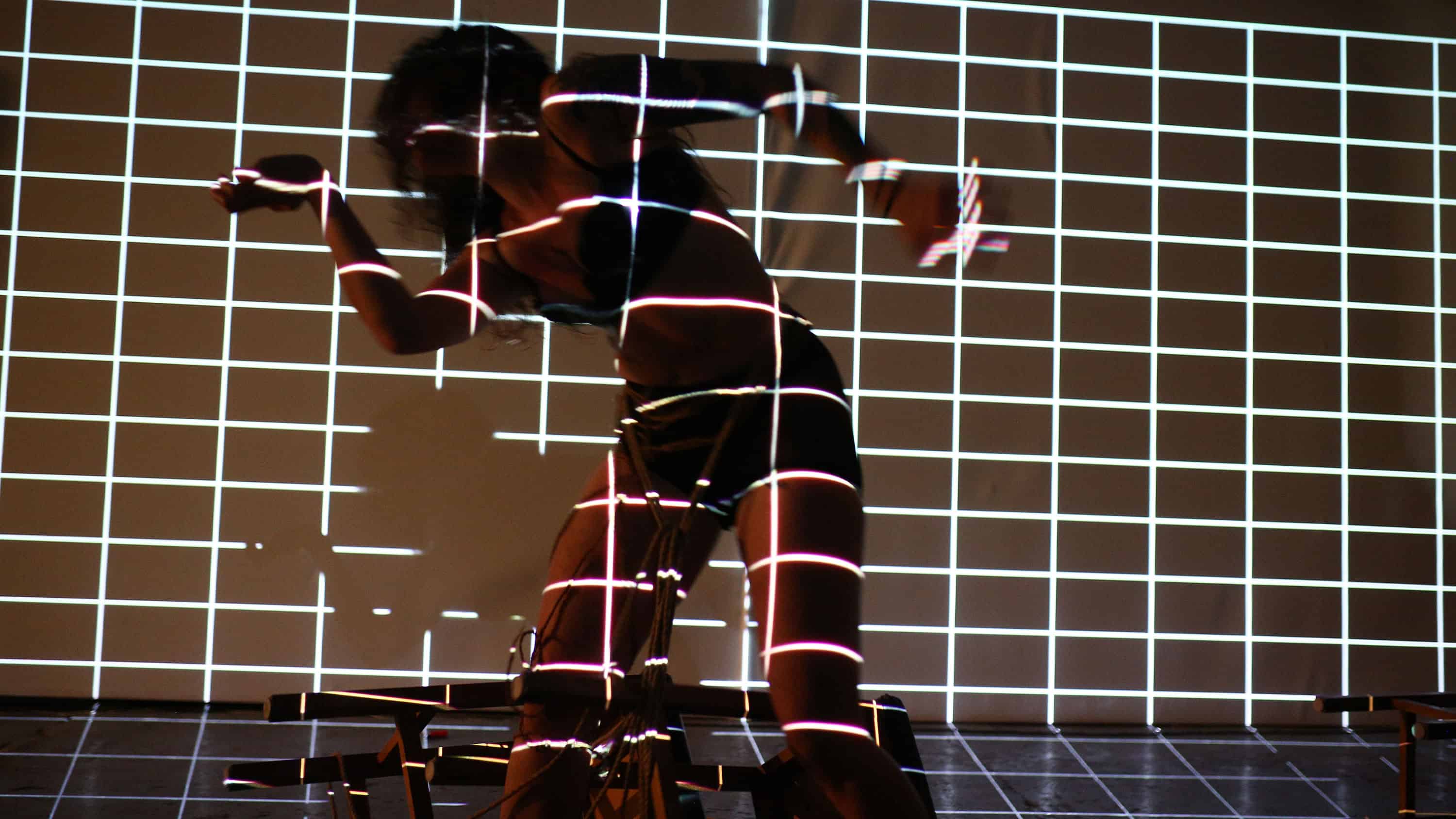Definitions of terms the reader may find useful relating to the article below:
Cisgender – often abbreviated to cis, is used to define a person who identifies with the gender that was assigned to them at birth
Gender binary – the classification system used to separate sex and gender into two distinct and opposing categories
Non-binary gender – an umbrella term used to describe a person whose gender identity does not sit with categories of male of female
Transgender – often abbreviated to trans, is used to define a person whose gender expression does not identify with the sex they were assigned at birth
They/them – gender-neutral pronoun, which can be used by someone who identifies as non-binary
I’ll be honest with you – for a long time I didn’t quite ‘get’ performance art. I have clear memories of my desperate cerebral acrobatics, trying to find the meaning behind Chris Burden’s martyred gunshot, or Pyotr Pavlensky’s 2013 searing ordeal of nailing his testicles to the ground in Moscow’s Red Square. Both artworks were drastic commentaries on state brutality and authoritarianism, but they also smacked of sheer narcissism to me. Able-bodied, white men using their bodies as vehicles for enquiring about social and political injustices just didn’t seem to have that much of an effect on moving me nor making me empathise with their pain and struggle.

Burgerz performance, photo by Elisa Rose
Fast forward to a chilly Tuesday evening in October, and I’m sitting at the Hackney Showroom watching Travis Alabanza make a hamburger with the assistance of a plucky volunteer from the audience. A case of role reversal as the cis, white male becomes the secondary figure and Travis, a queer, non-binary artist, poet and activist leads the evening’s performance. BURGERZ is an hour-long performance investigating what it is like to inhabit a body that doesn’t fit into two neat categories of male or female, pink or blue, hamburger or hotdog. Beneath Travis’ hilarious hand-sanitising routines and unapologetic frankness – they are not afraid to distance themselves from the mainstream and familiar transgender narratives, uttering ‘The first time I wore a dress…. I don’t fucking remember. Go on, revoke my trans card’ – lies the cutting reality of the violence inflicted on bodies that fail to adhere to the gender system. The seminal anecdote repeated by Travis throughout the evening, of having a burger thrown at them in broad daylight on Waterloo Bridge in April 2016, paints an uncomfortable picture in the minds of the audience. We shuffle and squirm in our seats; the air feels hot, sticky.
What is it about Travis’ performance that has such a great effect on us? Before I give my take I’d like to first consider the artistic tradition that BURGERZ falls into, if it does indeed belong to any classification. Performance art, or live art, is the name acquired to an artwork created through the live actions of the performer and/or participants, which is often politically driven. The two terms ‘performance’ and ‘live’ are sometimes used interchangeably, but here I have found a compelling case for appreciating their subtle differences. Artist Joshua Sofaer, who works in a variety of mediums including performance, stresses that “while Performance Art had been an established genre in the US since the 1970’s, the term ‘Live Art’ was an attempt to acknowledge the diversity of live based arts practices.” Live art is also a distancing from the spectacle and theatrics that a word like performance can carry. Encompassing performance art, along with early happenings and action art, live art gained wider recognition and prominence as a valid genre in the latter half of the 20th century, with the establishment of the Live Art Development Agency (LADA) in east London in 1999 – a leading global organisation promoting projects, opportunities, resources and publications about live art.
BURGERZ performance, Production Shot 1, photo by Holly Revell
BURGERZ performance, Production Shot 2, photo by Holly Revell
In most recent years the medium has observed a spike in interest. There has been visible effort in arts programming to supply live art festivals – these have become summer staples on London’s art scene, such as Hannah Barry’s Bold Tendencies festival, which in its 11th edition this July showcased a movement-based piece by L-E-V, titled OCD Love, a poetic dance about the holes, slippages and missing links of bodies moving in and out of our most complex of emotions. Bulgarian artist Gery Georgieva enthralled with her ritualistic and kitsch performance At The Source, part of this May and June’s annual performance art festival Block Universe, in which the artist sang along to bygone pop hits from her native country to delve into the figure of the diva, as a source of feminine energy and empowerment, and to interrogate the relationship between rural culture and commercialism. Malik Nashad Sharpe, a UK/US artist performing under the alias Marikiscrycrycry, presented excerpts from their work hotter than a pan during Mimosa House’s Queer Futures public programme earlier in March, harnessing choreography to present a subversive critique to a bruising and unaccommodating world. Mehmet Sander, on the other hand, stretched the expectations of what a dancer can be and put out an open call during Croydon’s Tempting Failure festival in July, inviting all NHS workers and staff to participate in a dance performance. The aim was to highlight the resilience of NHS workers and produce a collaborative and non-hierarchical art work, where the bodies of the dancers were equally as important as the director’s.
What is clear from the breadth of performances mentioned is that live art does not follow a strict or formulaic set of rules as to what kind of bodies are allowed to participate in it. It is elastic, accommodating those who are not classically trained dancers, theatre actors or performers to enter a space that has been traditionally unreserved for them. Furthermore, live art gives visibility to bodies otherwise written out of society. Travis’ performance stirred a full bodied response in me – unable to form words immediately after the show, I left stupefied, letting the experience sink into every groove of my skin. I had been confronted with a body, a conversation and experience that are so different to the one that has been presented to me countless times on stage.
BURGERZ combines elements of personal anecdotes, audience participation and improvisation, and a sparse set design, to the effect of engaging more directly with an audience. Travis is unashamed in their dialogue – a particularly piercing moment arises when their voice builds to a bellowing crescendo as they present the painful irony of having to get up on stage and readdress the trauma that was inflicted onto them in the form of a theatrical and palatable performance, generating glowing reviews and ticket sales. I find that difficult to swallow. Live art can present lived experience in a direct, confrontational and visceral way that a painting or a sculpture may be less able to achieve.

Burgerz performance, Rehearsal shots, photo by Holly Revell
This was my trail of thought when I curated Gut Feelings, a live art and music night by Thinking Flesh exploring the sensations we usually suppress in society at Centrala in Birmingham last July. I filled the programme with performances by four female and non-binary artists, including Palestinian artist Izdihar Afyouni. Izdihar performed ‘Jailhouse Mentality’, a live art piece involving elements of contemporary dance, rope bondage and guttural sound to express the primal drives of rage and desire. For over seven minutes the artist tied herself to the chairs in elaborate ways, weaving and warping the rope, delighting in the tension of grating material against flesh. But her performance was more than aesthetics. The artist inflicted physical pain onto herself, creating a stark visual metaphor against a sanitising and censoring society. Occupying a precarious space, as an Arab female artist interested in less conventional forms of desire, her work is often met with hostility and persecution in the Middle East. She also faces backlash from ‘liberal’ western audiences, who ‘other’ her work – during the evening, we received a complaint from a white woman named Linda. In spite of all this, Izdihar remains uncompromising and fearless, not diluting her work to meet the tepid palettes of mass audiences.
Izdihar Afyouni
Izdihar Afyouni
I think back to the sterile, elongated table at the centre of Travis’ set, the imposing centrepiece from which their performance plays out, the unassuming volunteer’s chair like a defendant’s stand at a court hearing. Travis makes no attempt to soften or neutralise the scene – although neither of us threw that fateful burger at them that day, (this is of course, assuming that we are an audience of mostly liberal, progressive thinkers) we are all accountable and complicit in benefiting from the system of gender and for turning a blind eye towards its brutality on gender non-conforming people. Live art breaks down the hierarchies between artist and audience, can facilitate discussions we fear to have in person, can open up our entire world view and teach us tolerance and compassion. As Izdihar herself states, through such performances we can “connect to on a primitive level … interrogate our fast-held ideologies and prejudices, suggest new and radical ways of being together and even alter our perception of what it means to be human.”
***
A shortlist of live art shows to see in London this winter:
-
- Figs in Wigs are a female performance company making work that is an unconventional blend of theatre, performance, comedy and dance, often with bad taste and kitsch pop-art aesthetics. See them perform their latest work Often Onstage, a densely-choreographed dissection of the highs and lows of being on stage, and the seesawing between being authentic thespians to commercial sell-outs, at the Battersea Arts Centre, 6-8 February 2019
More - Queer Jewish performance artist Rachel Mars will be performing her ongoing work Your Sexts Are Shit – Older Better Letters at the Barbican 13th December 2018, a deliciously unfiltered show unveiling the crude and vulgar love letters of artists and visionaries such as Frida Kahlo, Georgia O’Keefe and James Joyce, which put our modern phenomenon of sexting to shame
More - After a roaring success at the Camden People’s Theatre earlier this year, artist Rachel Young is back performing the dazzling, femme, supershero Afrofuturist Nightclubbing at Stratford Circus on the 22nd November
More - NEXT at The Yard Theatre, Hackney Wick is a new cutting-edge arts festival showcasing the freshest names in theatre and performance from the 27th Nov-8th December 2018. Topics such as colonialism, pollution, sex and identity will be explored by artists including Marion Burge, performing a meditation on motherhood as a figure in decolonisation We Owe You A Legacy and Eirini Kartsaki performing HERPES – a show about desire, STIs and the Duchess of Cambridge.
More
Written by Maggie Kuzan
Edited by Contemporary Lynx - Figs in Wigs are a female performance company making work that is an unconventional blend of theatre, performance, comedy and dance, often with bad taste and kitsch pop-art aesthetics. See them perform their latest work Often Onstage, a densely-choreographed dissection of the highs and lows of being on stage, and the seesawing between being authentic thespians to commercial sell-outs, at the Battersea Arts Centre, 6-8 February 2019











